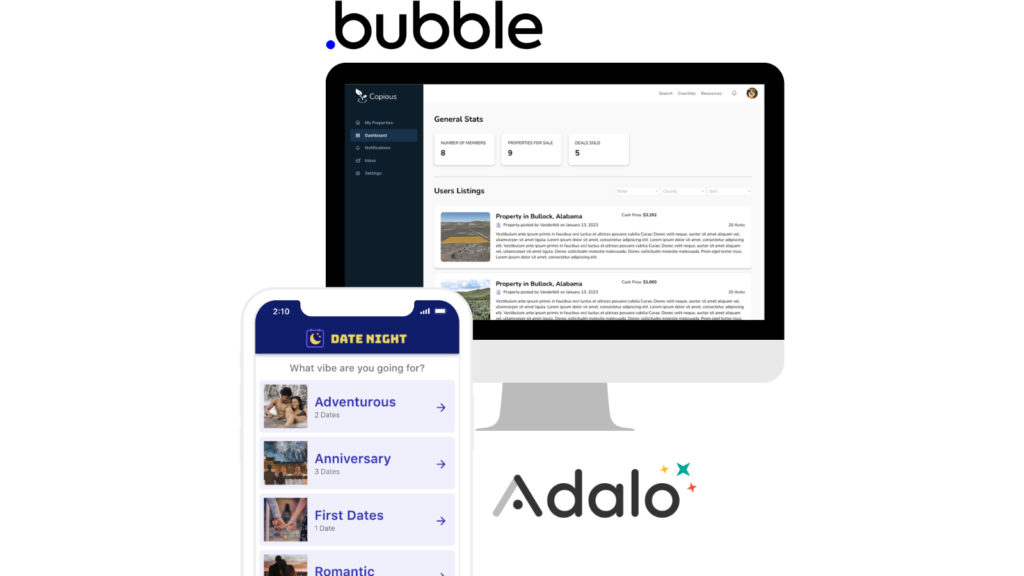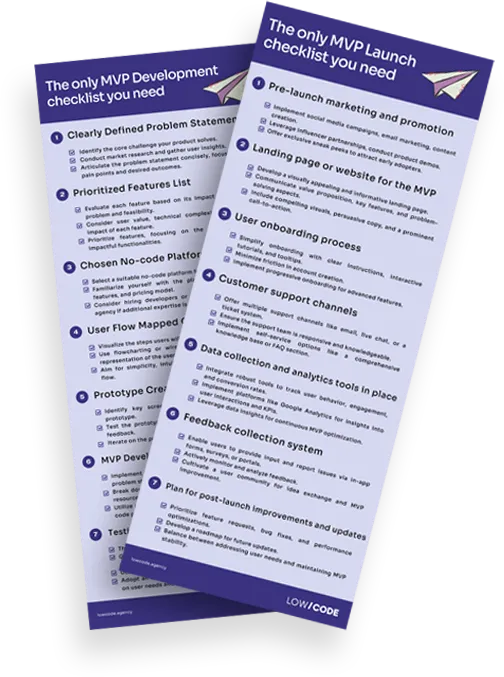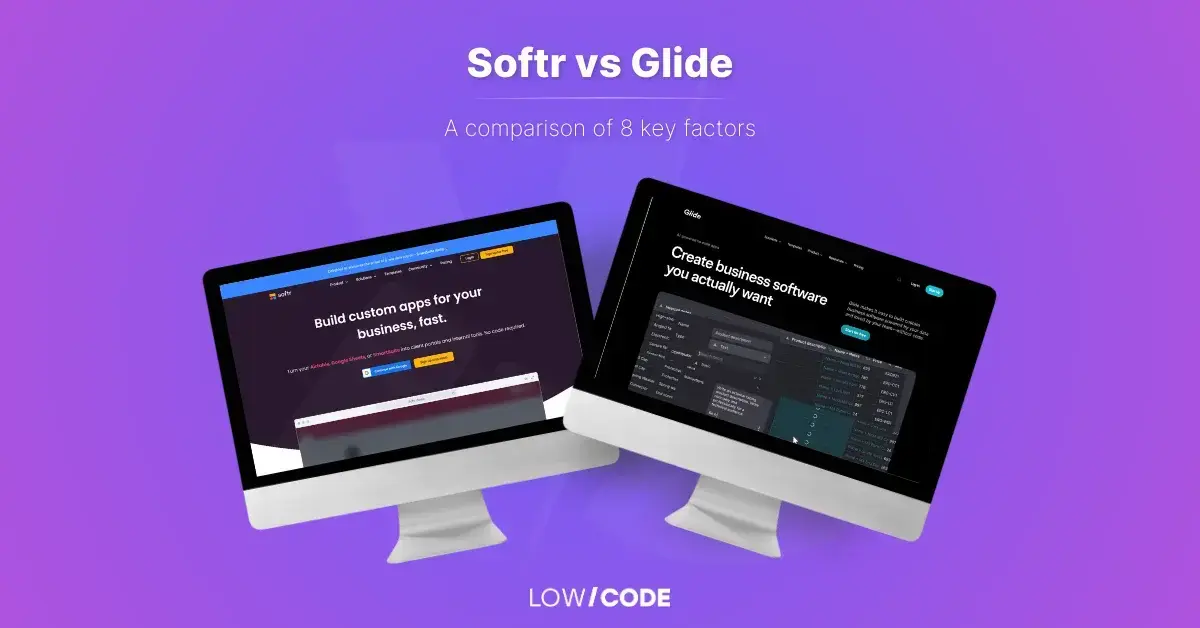
Adalo vs. Bubble: A comprehensive comparison
While Adalo is perfect for non-programmers looking to quickly create simple apps, as it's easier to learn and use, Bubble is better suited for businesses of all sizes looking to develop web applications with a high level of complexity, while also having the potential for scalability. With the help of all the various elements listed and explained in this comparison, you can choose the best no-code platform for your app development project in an informed way.

The rise of no-code app development platforms has brought Adalo and Bubble to the forefront of the industry. Both platforms enable users to create web and mobile applications without writing any code. This article compares Adalo and Bubble in depth by looking at their features, capabilities, and use cases. This will help you decide which platform is best for your needs.
Overview of Adalo and Bubble
Adalo is a flexible, no-code platform that makes it easy to build web and mobile apps with its drag-and-drop interface and library of ready-made components and templates. It also integrates with various third-party services like Zapier, Airtable, and Stripe, making it an excellent choice for users who want to create applications quickly and efficiently.

Bubble app builder, on the other hand, is a powerful no-code web app builder designed primarily for web application development.hile its main focus is web apps, Bubble also allows users to build mobile applications and upload them to app stores with the help of certain plugins. It has a visual editor for making app interfaces and tools for making custom workflows and actions. With its built-in database and integrations with third-party services like Google, MailChimp, and Stripe, Bubble is ideal for users looking to build web applications with advanced functionality.
Adalo vs. Bubble: User Interface (UI) and User Experience (UX)
Both Adalo and Bubble have easy-to-use interfaces, but they are designed and work in different ways. Adalo has a clean, easy-to-use drag-and-drop interface that makes it easy for people to design and build app interfaces. Its component library and pre-built templates make making apps easier, so users can focus on the user experience and the design of the app as a whole. Adalo also has a design that responds to different screen sizes and devices. This makes sure that the experience is the same on all platforms.
Bubble's visual editor, while powerful, has a steeper learning curve compared to Adalo. But once users learn how to use the interface, they can take advantage of Bubble's advanced features and many ways to customize it. Bubble's responsive design tools also allow users to create web applications that adapt to different screen sizes and devices.
Adalo vs. Bubble: Features and unctionality
Adalo and Bubble both provide a wealth of features for creating powerful applications without writing any code.
Key features of Adalo include:
- Drag-and-drop interface for designing app interfaces
- Pre-built library of components and templates
- Integrations with third-party services like Zapier, Airtable, and Stripe
- Marketplace for accessing pre-built templates and components
- App monetization through in-app purchases and subscriptions
- Support for native mobile app development
Bubble's key features include the following:
- Visual editor for designing app interfaces
- Custom workflows and actions for advanced functionality
- Built-in database for data management
- Integrations with third-party services like Google, MailChimp, and Stripe
- Plugin marketplace for additional features and integrations
- Advanced user management and authentication tools
- Marketplace for pre-built templates
Adalo vs. Bubble: Customization and flexibility
Bubble has a slight edge over Adalo in terms of customization and flexibility. Adalo offers a good level of customization through its pre-built components and templates, but you may not be able to create complex logic or custom actions. This makes it a better choice for users who prioritize simplicity and ease of use over advanced functionality.
Bubble is very flexible and easy to customize. Users can make their own workflows, actions, and integrations for more advanced functionality and a unique app experience. This makes Bubble ideal for users who need a higher degree of customization and are willing to invest time in learning the platform. Bubble also allows the use of JavaScript, HTML, and CSS to create new components, animations, or features that the platform doesn't already offer.
Adalo vs. Bubble: Learning curve
Adalo is designed with non-technical users in mind, making it relatively easy to learn and start building applications. Its drag-and-drop interface and pre-built components make it easy to make apps, so users can make visually appealing apps quickly even if they don't know how to code.
Bubble has a slightly steeper learning curve, especially for users who want to create
custom workflows and actions. Bubble, on the other hand, has a lot of documentation, tools, and community support that help users learn and master the platform quickly. So, Bubble is best for people who are willing to spend time learning about its more advanced features and functions.
Adalo vs. Bubble: Pricing and plans
Both Adalo and Bubble offer a range of pricing options, catering to different user needs and budgets. Adalo offers a free plan with limited features and capacity, as well as paid plans starting at $45 per month with more resources and features, such as higher app user limits, priority support, and custom branding.
Bubble also offers a free plan with basic features and capacity. Paid plans start at $32 per month and provide more capacity, as help with Bubble is usually fast regardless of the plan. Bubble's pricing plans cater to a wide range of users, from small businesses to individual developers or those just starting in app or software development.
Adalo vs. Bubble: Performance and speed
Adalo and Bubble both have their strengths and limitations in terms of performance and speed. Adalo apps generally perform well, with good response times and speed. But performance could be affected if the app gets too complicated or if a lot of people use it at once. Optimizing app design and using native components can help improve performance.
Bubble apps can be quick and responsive, but they might not work as well when real-time values are needed, like on a trading platform with millions of interactions. However, Bubble provides tools and methods, such as custom server-side actions, caching, and performance monitoring, that can be used to improve app performance.
To gain a deeper insight into Bubble's strengths and potential drawbacks, refer to our comprehensive guide on Bubble.io's capabilities and limitations.
Choosing between Bubble and Adalo can be challenging, but you don't have to make this decision alone. Book a free consultation with our experts at LowCode Agency, and we'll help you discover which platform aligns best with your project's needs and goals.
Adalo vs. Bubble: Community and support
Both Adalo and Bubble have active communities and support teams that are there to help users with any questions or problems they might have. Adalo has a vibrant community of users and developers, as well as a dedicated support team. Users can access forums, documentation, and resources to help them get started and troubleshoot any issues.
Bubble has a strong community of users and developers, with a wealth of resources, forums, and documentation available. Bubble's support team is quick to respond, so users can get help with any problems they run into while making apps.
Adalo vs. Bubble: Use cases and suitability
Adalo is well-suited for:
- Entrepreneurs and businesses developing prototypes, no-code MVPs, or full-fledged mobile and web applications
- Non-technical users who want to create custom applications without learning to code
- Users who prioritize mobile app development and require a wide range of pre-built components and templates

Bubble is ideal for:
- Startups, small businesses, and individual developers creating web applications without extensive technical knowledge
- Users who want to build custom applications with advanced functionality and workflows
- Those focusing on web application development and requiring more advanced customization options
Adalo vs. Bubble: Scalability
Some users' worries about Adalo's ability to grow are eased by the fact that it works with Xano, a quick backend solution that doesn't need any code. Xano is a low-code tool that has its own learning curve, but its integration with Adalo makes the platform more scalable.
Bubble was made to be very scalable, which is reflected in its strong database structure and management tools. With proper data structures, Bubble can handle up to 1 million users without compromising performance. But it's important to make sure your app is structured the right way to keep it scalable and perform at its best.
Adalo vs. Bubble: Deployment and publishing
Adalo makes it easy to publish native apps directly to the App Store, Google Play, or a custom web domain. This makes it an easy way to deploy apps.
Bubble is mostly made for building web applications, not native iOS and Android apps. While it can create powerful web applications, converting them into mobile apps for publishing on the App Store and Google Play requires additional assistance, such as plugins. Nevertheless, users can manage this process themselves with the right tools and guidance.
Adalo vs. Bubble: Platform ecosystem
Adalo has tutorials, support forums, and resources from outside the company to help users learn how to use the platform and build their apps well.
Bubble provides tutorials, support forums, and third-party resources as well. The Bubble community is known for being helpful and supportive, with users often providing free walkthroughs and assistance to others.
Adalo vs. Bubble: Collaboration and teamwork
Bubble has recently relaunched its version control system, offering improved collaboration features. The platform also allows admins to set permissions based on roles and control who can work on the app, what versions are being worked on, and what features they have access to.
Adalo also has version control, collection permissions, and real-time collaboration, which make it easier and faster for teams to work on app development projects.
Adalo vs. Bubble: Platform limitations
Bubble has several limitations, such as only supporting JavaScript for custom integrations and the lack of native app deployment. Additionally, Bubble does not allow for self-hosting on private or on-premises servers, which can be a source of frustration for some users. It also doesn't provide users with their app's source code.
Adalo's limitations include subpar customer service, a slow-performing app builder, and an expensive pricing structure for certain features that may not add value.
Success stories and case studies
Scholarcash is a successful Adalo-built app that helps high school and college students find scholarships. With more than 20,000 downloads on the iOS App Store, the app was built in just one week.
Beelango, an e-learning platform for language acquisition, was built using Bubble. Beelango has more than 100,000 users all over the world and makes more than $300,000 a year. It offers interactive courses with fun activities to help people learn languages.

If you want to use Bubble in your next app development project, you might want to get in touch with LowCode Agency, a top no-code agency that specializes in Bubble development.
Our team of experienced developers can help you build a custom solution tailored to your unique needs and goals. Get in touch with us today to discuss your project and discover the potential of no-code app development with Bubble!




%20(Custom).webp)









